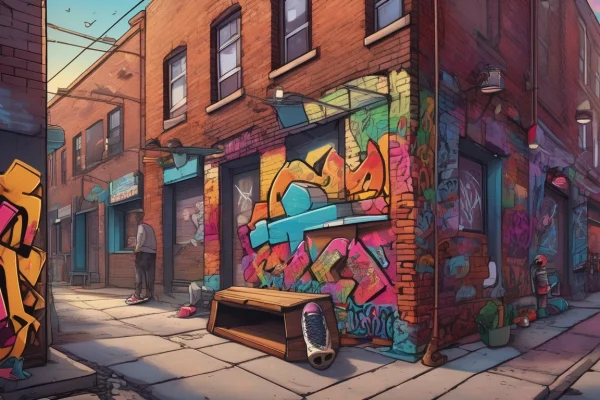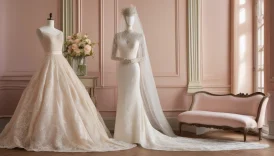The History of Streetwear: Who Inspired the Movement?

- The History of Streetwear: Who Inspired the Movement?
- The Origins of Streetwear
- Key Influencers in Streetwear
- The Role of Skate Culture
- Iconic Skate Brands
- Skateboarding Events and Their Impact
- The Influence of Hip-Hop
- Streetwear and High Fashion
- Notable Collaborations
- The Rise of Fashion Weeks
- Frequently Asked Questions
Streetwear is more than just a fashion trend; it’s a vibrant cultural movement that has evolved dramatically over the decades. Originating from the streets, it blends elements of art, music, and lifestyle, creating a unique aesthetic that resonates with many. But what exactly inspired this dynamic movement? The roots of streetwear can be traced back to the late 1970s and early 1980s, a time when various subcultures began to intersect, giving birth to a style that was both rebellious and expressive.
Imagine a canvas splashed with colors from skate culture, hip-hop beats, and punk rock attitudes. This fusion gave rise to streetwear, a genre that thrives on individuality and self-expression. In the beginning, it was about more than just clothing; it was a lifestyle that embraced community and creativity. As skateboarding gained popularity, it brought with it a distinct style that featured oversized tees, baggy pants, and iconic sneakers. This was the foundation of streetwear, and it was heavily influenced by the underground scenes of cities like Los Angeles and New York.
Aside from skate culture, the hip-hop movement played a pivotal role in shaping streetwear. Artists like Run-D.M.C. and later Kanye West didn’t just create music; they created trends that would ripple through the fashion world. Their bold choices in clothing not only set the stage for urban fashion but also challenged traditional fashion norms. This merging of music and style is what makes streetwear so captivating and relevant today.
As we dive deeper into the history of streetwear, it’s essential to recognize the key influencers who have left an indelible mark on this movement. From designers like Shawn Stussy, who pioneered the streetwear brand Stüssy, to the cultural impact of hip-hop artists, each has contributed to this ever-evolving landscape. Streetwear is a testament to the power of cultural exchange and the ability of fashion to transcend boundaries.
In conclusion, the history of streetwear is a rich tapestry woven from various cultural threads. It invites us to explore how our surroundings influence our style and how, in turn, we can express our identities through what we wear. So, who inspired this movement? The answer lies in the streets, where creativity knows no bounds.

The Origins of Streetwear
Streetwear, a term that now evokes images of urban cool and cutting-edge fashion, has its roots firmly planted in the vibrant cultures of the late 1970s and early 1980s. This was a time when skate culture, hip-hop, and punk collided, creating a unique blend of styles that would eventually revolutionize the fashion landscape. Imagine a world where the streets were alive with the sounds of hip-hop beats, the sight of skateboarders performing tricks, and the spirit of rebellion embodied in every ripped t-shirt and oversized hoodie.
In the early days, streetwear was more than just clothing; it was a lifestyle. The communities that fostered this movement were often marginalized, yet they thrived on creativity and self-expression. With each skate session or rap battle, individuals were not just showcasing their skills but also their distinct styles. This grassroots movement was a response to mainstream fashion, which often felt out of touch with the realities of urban life.
As skateboarding gained popularity, brands began to emerge, catering to the needs of this new generation. Skate shops became hubs for not only purchasing gear but also for sharing ideas and culture. The aesthetic was raw and authentic, characterized by bold graphics and a DIY ethos. This was a time when every piece of clothing told a story, often reflecting the wearer’s experiences and influences.
Moreover, the influence of hip-hop artists played a pivotal role in shaping the visual identity of streetwear. Rappers began to embrace street style, wearing oversized clothing and sneakers that resonated with their audiences. This symbiotic relationship between music and fashion laid the groundwork for what streetwear would become—a powerful cultural statement that transcended mere clothing.
In essence, the origins of streetwear are deeply intertwined with the cultural movements of the time. It was a response to societal norms, a celebration of individuality, and a testament to the creativity that thrives in urban environments. As we delve deeper into the evolution of streetwear, it’s essential to recognize these foundational influences that continue to shape the movement today.

Key Influencers in Streetwear
When you think about the evolution of streetwear, it’s impossible not to mention the visionaries who have shaped its landscape. From designers to musicians, these influential figures have woven their creativity into the very fabric of urban fashion. One of the earliest pioneers was Shawn Stussy, whose eponymous brand launched in the 1980s. Stussy blended surf culture with street aesthetics, laying the groundwork for what we now recognize as streetwear. His designs were not just clothing; they were a statement of identity, a way for individuals to express their unique style.
Fast forward to the 21st century, and we see the indelible mark left by Kanye West. His Yeezy brand has revolutionized the streetwear scene, merging high fashion with urban culture. Kanye’s vision transcends mere clothing; it’s about a lifestyle, a mindset. His collaborations with Adidas brought streetwear into mainstream consciousness, making it accessible and desirable to a broader audience. The hype surrounding Yeezy releases is a testament to how powerful a single influencer can be in shaping trends.
Moreover, the influence of artists like Takashi Murakami and KAWS cannot be overlooked. Their artwork has been integrated into streetwear collections, creating a fusion of art and fashion that speaks to a generation hungry for creativity. This intersection of disciplines has not only elevated streetwear but also brought it into galleries and art shows, blurring the lines between commercial and fine art.
In addition to these key figures, the community itself plays a vital role. Streetwear is not just about the brands; it’s about the culture, the people who wear it, and the stories they tell. From the skate parks of California to the streets of Tokyo, these influencers have created a global movement that continues to evolve. As we look to the future, one can only wonder: who will be the next trailblazer to redefine what streetwear means?
The Role of Skate Culture
Skate culture has been a driving force behind the evolution of streetwear, acting as a vibrant canvas where fashion meets rebellion. Emerging from the sun-soaked streets of California in the late 1970s, skateboarding was not just a sport; it was a lifestyle and a statement. Young people found a way to express their individuality through their skateboards and the clothes they wore. Think of it as a canvas where creativity and attitude collide, leading to a unique style that resonated with the urban youth.
The aesthetics of skate culture heavily influenced streetwear, with brands like Vans and Thrasher becoming staples in the wardrobes of skaters and non-skaters alike. These brands didn’t just sell shoes and apparel; they sold a lifestyle, a sense of belonging, and a way to stand out in a crowd. The iconic checkerboard pattern of Vans or the fiery logo of Thrasher became symbols of rebellion and authenticity, representing a community that valued individual expression over conformity.
Moreover, skateboarding events such as the X Games played a pivotal role in popularizing skate culture and integrating it into the mainstream. These events showcased not just the incredible skills of athletes but also the fashion choices that accompanied them. The skateboarding scene became a melting pot where music, art, and fashion intersected, driving the evolution of streetwear further.
In essence, the relationship between skate culture and streetwear is like a dynamic duo – each one amplifying the other. As skateboarding gained traction globally, so did its influence on fashion. Today, it’s impossible to talk about streetwear without acknowledging the profound impact of skate culture. The two have become intertwined, creating a rich tapestry that continues to evolve and inspire new generations of creators and trendsetters.
Iconic Skate Brands
When we think about skate culture, certain brands immediately come to mind. These brands have not only shaped the skateboarding scene but have also become integral to the streetwear movement. Take Vans, for example. Founded in 1966, Vans originally catered to the needs of skaters with their durable shoes designed for optimal grip on a skateboard. Over the decades, their iconic checkerboard pattern has transcended the skate parks, becoming a staple in mainstream fashion. Today, you can spot Vans shoes on everyone from skaters to celebrities, proving their universal appeal.
Another heavy hitter in the skate world is Thrasher. Known for its edgy graphics and rebellious spirit, Thrasher magazine started in 1981 and quickly became the voice of skate culture. The brand’s logo, featuring a fiery font, is a symbol of authenticity and passion for skating. Wearing Thrasher gear isn’t just about fashion; it’s a declaration of belonging to a community that values creativity and freedom.
These brands have paved the way for many others, influencing not just skateboarding, but also how we perceive urban fashion. In fact, the impact of these iconic brands can be seen in various aspects of culture, from music to art. The intersection of skateboarding and streetwear has created a unique aesthetic that resonates with youth around the world.
To further illustrate the influence of these brands, here’s a quick comparison:
| Brand | Founded | Notable Products |
|---|---|---|
| Vans | 1966 | Old Skool, Slip-Ons |
| Thrasher | 1981 | Magazines, Apparel |
In conclusion, the legacy of these iconic skate brands is undeniable. They have not only contributed to the evolution of skateboarding but have also played a pivotal role in shaping the streetwear landscape. As we continue to witness the blending of cultures, it’s exciting to think about where these influences will take us next.
Skateboarding Events and Their Impact
Skateboarding events have played a pivotal role in the evolution of streetwear, acting as a vibrant stage where culture, sport, and fashion collide. These events not only showcase incredible athleticism but also serve as a melting pot for creativity and style. Think about it: when you see a skateboarder performing jaw-dropping tricks, they’re not just pushing the limits of their sport; they’re also setting trends in fashion that resonate far beyond the skate park.
One of the most significant events in the skateboarding calendar is the X Games. Established in the late 1990s, this extreme sports extravaganza brought skateboarding into the mainstream spotlight. Suddenly, skate culture was no longer confined to local parks; it was broadcasted to millions, influencing everything from music to fashion. The athletes became icons, and their unique styles were imitated by fans around the world.
Moreover, events like the Street League Skateboarding (SLS) series have further elevated the profile of skateboarding. With a competitive format that blends technical skill and creativity, SLS has attracted a diverse audience and pushed the boundaries of what skateboarding can be. The athletes’ gear—often a mix of high-performance skate shoes and streetwear staples—has become a focal point, showcasing how functionality meets style.
It’s essential to recognize that these events do more than just highlight athletic prowess; they also foster community and collaboration. For instance, brands often sponsor these events, creating limited-edition merchandise that reflects the unique culture of skateboarding. This synergy between sport and fashion has led to a dynamic marketplace where fans eagerly anticipate new drops inspired by their favorite athletes.
In conclusion, skateboarding events are not just competitions; they are cultural phenomena that shape the landscape of streetwear. They bring together diverse influences, from music to art, creating a rich tapestry that defines urban style today. So, the next time you watch a skateboarding event, remember—you’re witnessing more than just tricks; you’re seeing the future of fashion unfold before your eyes.
The Influence of Hip-Hop
Hip-hop isn’t just a genre of music; it’s a cultural phenomenon that has shaped and influenced streetwear in profound ways. Emerging from the streets of the Bronx in the 1970s, hip-hop culture brought with it a unique sense of style that resonated with the youth. Think about it: when you hear a rap song, the visuals of baggy jeans, oversized tees, and flashy sneakers often come to mind. This is no coincidence; these fashion choices are deeply intertwined with the music itself.
One of the most significant impacts of hip-hop on streetwear is the way it has democratized fashion. In the past, high fashion was reserved for the elite, but hip-hop artists have embraced and popularized street styles that reflect their roots and experiences. Artists like Run-D.M.C. famously wore Adidas sneakers and tracksuits, which not only showcased their personal style but also sparked a trend that would influence generations. The message was clear: you didn’t have to be wealthy to be stylish.
Moreover, hip-hop has also been a voice for social issues, and this is reflected in the clothing choices of many artists. For instance, brands like FUBU (For Us, By Us) emerged as a response to the lack of representation in mainstream fashion. These brands celebrated Black culture and identity, creating a sense of community and pride among fans. This movement can be seen as a revolution—a way for marginalized voices to gain visibility through fashion.
Additionally, collaborations between hip-hop artists and streetwear brands have created a buzz that transcends the music industry. For example, when Kanye West launched his Yeezy line, it blurred the lines between streetwear and high fashion, making waves in both worlds. The hype surrounding such releases often leads to long lines and sold-out items, proving that the influence of hip-hop on streetwear is not just a trend; it’s a movement.
In conclusion, the influence of hip-hop on streetwear is undeniable. It has transformed not only how we dress but also how we perceive fashion itself. As hip-hop continues to evolve, so too will its impact on the streets and beyond.

Streetwear and High Fashion
In recent years, the lines between streetwear and high fashion have become increasingly blurred, creating a fascinating fusion that has captivated fashion enthusiasts around the globe. This evolution isn’t just a trend; it’s a cultural phenomenon that reflects the changing dynamics of style and identity. Imagine a world where the casual, laid-back vibe of streetwear meets the polished, sophisticated allure of high-end fashion. Sounds intriguing, right?
One of the most notable aspects of this crossover is the collaborations between streetwear brands and luxury fashion houses. These partnerships have not only generated immense buzz but have also redefined what it means to be fashionable in contemporary society. For instance, when brands like Supreme teamed up with Louis Vuitton, it was more than just a collection; it was a statement that elevated streetwear to the status of high fashion. The hype surrounding these collaborations often leads to long lines and sold-out items, highlighting the cultural significance of this merging of styles.
Moreover, streetwear’s presence at major fashion weeks has further solidified its place in the high fashion arena. Designers are now showcasing street-inspired collections on global platforms, blending urban aesthetics with luxury materials and craftsmanship. This shift is not just about aesthetics; it’s a reflection of societal changes and the way we view fashion today. Streetwear is no longer confined to the streets; it has stepped onto the runway, commanding attention and respect.
To illustrate this fascinating relationship, here’s a quick overview of some key collaborations that have made waves in the fashion industry:
| Brand | Collaborator | Year |
|---|---|---|
| Supreme | Louis Vuitton | 2017 |
| Off-White | Nike | 2017 |
| Yeezy | Adidas | 2015 |
In conclusion, the intersection of streetwear and high fashion is not just a fleeting trend; it’s a dynamic evolution that continues to shape the fashion landscape. As we move forward, it will be exciting to see how these two worlds continue to merge, creating fresh styles and redefining our understanding of what fashion truly represents.
Notable Collaborations
When it comes to the world of streetwear, collaborations between brands have become a powerful force that reshapes the fashion landscape. One of the most talked-about partnerships was between Supreme and Louis Vuitton. This collaboration not only merged high fashion with street culture but also created a buzz that rippled through both industries. Imagine the excitement when streetwear aficionados and luxury fashion lovers came together, all for a limited collection that flew off the shelves in record time!
Another significant collaboration was between Adidas and Kanye West, which birthed the iconic Yeezy line. This partnership showcased how a musician’s personal style could influence sneaker culture and, by extension, streetwear. The Yeezy brand didn’t just sell shoes; it created a lifestyle, turning heads and setting trends worldwide. The demand for Yeezy products often leads to frenzied releases, where fans camp out for days just to get their hands on the latest drop.
Moreover, the collaboration between Off-White and Nike was another game-changer. Virgil Abloh’s unique vision transformed classic Nike silhouettes into coveted pieces of art. This partnership exemplified how streetwear can elevate sportswear into something that feels both exclusive and accessible at the same time. The result? A collection that not only appealed to sneakerheads but also caught the eye of fashion critics.
These collaborations signify a larger trend where streetwear is no longer relegated to the sidelines. Instead, it has stormed the main stage, showcasing how the lines between urban culture and luxury fashion have blurred. As we look to the future, we can only imagine what other exciting partnerships await, continuing to push the boundaries of style and creativity.
The Rise of Fashion Weeks
In recent years, streetwear has made a monumental leap from the underground to the spotlight, particularly during major fashion weeks around the globe. It’s fascinating to see how this once-niche style has intertwined itself with high fashion, proving that the streets are just as influential as the runways. Have you ever noticed how a simple hoodie can now be showcased alongside haute couture? This transformation is not just a trend; it’s a cultural shift that reflects the evolving landscape of fashion.
Fashion weeks in cities like New York, Paris, and Milan have become platforms where streetwear brands strut their stuff, often blurring the lines between luxury and everyday wear. Designers are now embracing urban aesthetics, showcasing collections that resonate with the youth while still appealing to high-end consumers. This intersection of styles has led to a dynamic fashion environment where creativity knows no bounds.
One of the most notable moments was when brands like Off-White and Fear of God graced the prestigious runways. These collections not only embraced the essence of street culture but also challenged traditional fashion norms. The impact? A newfound respect for streetwear, as it has become a legitimate player in the fashion industry.
Furthermore, the inclusion of streetwear in fashion weeks has sparked discussions about authenticity and accessibility in fashion. Many enthusiasts now argue that fashion should be a reflection of real life, not just an elite art form. This shift has encouraged designers to rethink their strategies and consider how they can connect with a broader audience.
As we look ahead, it’s clear that the rise of streetwear in fashion weeks is more than just a passing phase. It’s a movement that celebrates diversity, creativity, and the spirit of the streets. So, the next time you see a streetwear piece on a runway, remember that it’s not just clothing—it’s a statement that continues to shape the future of fashion.
Frequently Asked Questions
- What is streetwear?
Streetwear is a unique fashion style that blends elements from skate culture, hip-hop, and punk. It’s all about expressing individuality and often features casual clothing like graphic tees, hoodies, and sneakers.
- Who are the key influencers in streetwear?
Several designers and artists have shaped streetwear, including Shawn Stussy, Kanye West, and Virgil Abloh. Their innovative designs and cultural contributions have significantly impacted the movement.
- How did skate culture influence streetwear?
Skate culture introduced a laid-back, rebellious aesthetic to streetwear. Brands like Vans and Thrasher became essential, promoting a lifestyle that resonated with youth and urban communities.
- What role does hip-hop play in streetwear?
Hip-hop has profoundly influenced streetwear by popularizing urban styles and trends. Rap artists often showcase their fashion choices, making them trendsetters in the streetwear community.
- Are streetwear and high fashion connected?
Absolutely! The lines between streetwear and high fashion have blurred, with collaborations between brands like Supreme and Louis Vuitton creating a buzz and reshaping the fashion landscape.
- Why is streetwear important in today’s fashion world?
Streetwear represents a cultural movement that emphasizes self-expression and community. Its presence in major fashion weeks highlights its mainstream acceptance and influence on global trends.





